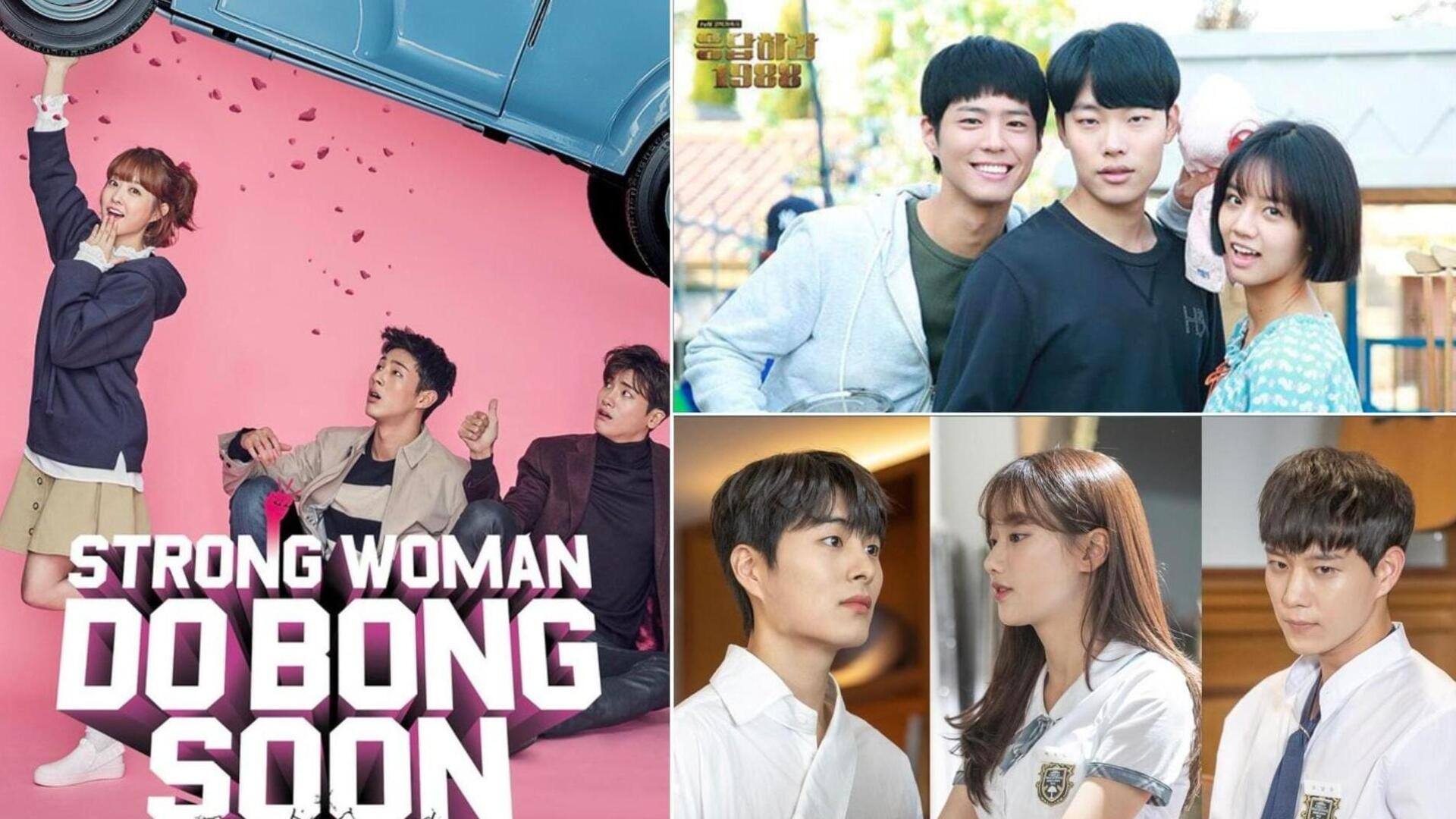
Explainer: Breaking down complexities of Second Lead Syndrome in K-dramas
What's the story
In the enchanting world of K-dramas, where love triangles and heart-fluttering moments reign supreme, there's a quirky phenomenon that has fans yelling, "Oops, I did it again!"
Welcome to Second Lead Syndrome (SLS), the rollercoaster ride that turns viewers into cheerleaders for the underappreciated characters rather than the main leads.
Let's uncover what SLS is and why second leads often steal the show.
Decoding SLS
What exactly is SLS
SLS is not just a fan phenomenon; rather, it's an emotional whirlwind that has viewers questioning their loyalties.
Forget the conventional love triangle; this syndrome throws you into a vortex where you're rooting for the dark horse, the unsung hero, or the second lead often overshadowed by the main lead's spotlight.
It's like cheering for the quirky friend who never gets enough credit!
#1
Why second leads have this uncanny ability to steal show
It's not just about second leads' dreamy looks or perfectly timed entrances; it's about the irresistible cocktail of loyalty and that relatable touch of unrequited love.
The underdog charm becomes a magnetic force that pulls viewers into an emotional tug-of-war, leaving them helplessly invested in the second lead's story.
These characters' appeal lies in their ability to inject a fresh dynamic into the narrative.
#2
Understanding second lead tropes
In certain Korean dramas, second leads play multifaceted roles, often serving as a friend or former friend of one or both main leads.
The second lead might also take on the role of a current or former boyfriend/girlfriend or fiancé/fiancée, introducing a layer of tension as they stake their claim on the main lead and exhibit hostility toward the emerging new love interest.
#3
When lead no. 2 steals spotlight with kindness, unspoken emotions
In certain K-dramas, the second lead often treats the heroine with more kindness and consideration than the primary (main) lead.
So, audiences are inclined to rally behind hero number two, especially if the first hero mistreats the female lead. Secondly, they are usually reluctant to express their true feelings.
This hesitation may stem from the fear of jeopardizing their friendship by confessing their emotions.
#4
How makers expertly craft SLS for viewer engagement
Intentionally crafting this syndrome can be a strategic move for production teams of K-dramas.
This adds an element of unpredictability to the storyline, keeping viewers emotionally invested and fostering heated discussions within the fandom.
One notable example is the K-drama Reply 1988, where the deliberate manipulation of second lead dynamics resulted in widespread audience fervor and contributed significantly to the show's overall success.
#5
When second lead doesn't get girl
Several K-dramas have left viewers grappling with a heavy SLS dose.
A Hallyu classic that set the stage for this emotional rollercoaster is Boys Over Flowers (2009).
Second lead Yoon Ji-hu's (Kim Hyun-joong) caring demeanor toward Geum Jan-di (Ku Hye-sun) presented a contrast to the arrogant main lead Go Jun-pyo (Lee Min-ho)—leaving viewers torn and immersed in SLS. But Yoon doesn't get the girl!
#6
Popular second leads who got the girl
In many instances, the second lead is left to navigate life alone.
However, there are rare cases where the second lead manages to secure the affection of the female lead—defying the typical narrative conventions.
Notable examples of this outcome can be found in popular K-dramas such as Reply 1988 (2015-16), My First First Love (2019), Love Alarm (2019-21), and The King in Love (2017).